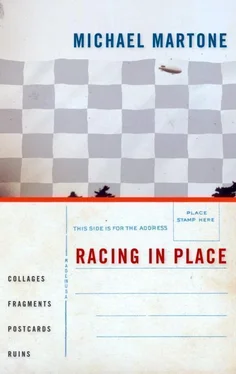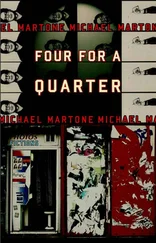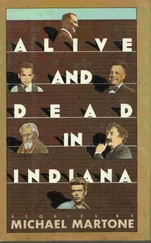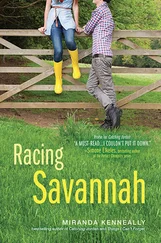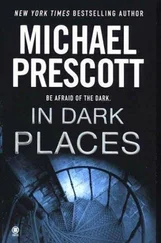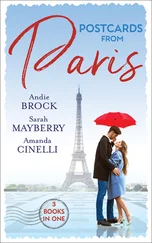
I
Growing up, my son always said that when he grew up he wanted to be a seven dwarf. That was how he said it. "I want to be a seven dwarf." It was funny, of course, because he wanted the most out of that expressed desire. He wished to be both a dwarf-an interesting aspiration in itself-and all seven of the Disney alternatives at once. And this use of a singular plural could have also meant he also meant he wanted to be a whole new category of dwarf, an eighth dwarf-beyond Sleepy, Grumpy, Sneezy, etc.-while still retaining the magic completeness of the whole tribe, the one and the seven. Part of the gang but separate too. He wanted to be both uncharacteristic and characteristic at the same time. He was learning to sort by sorting. This bent had shown up quite early. In the crib he watched the floating flotilla of four stuffed bears circling above him, suspended from the twirling arms of a wind-up mobile. The bears were identical save for the different colors of their matching overalls. I cut them down when my son was sitting up, and as soon as he could, he sat for hours, it seemed, and arranged the bears in a line-red, blue, green, yellow; green, red, blue, yellow; blue, yellow, red, green. It seemed to be in his blood, this four-letter alphabet like the code in DNA. Later it would be flags-he could recognize all the different state flags-then di nosaurs, Power Rangers, Pokemon. Even now, in the next room while I type this, the teenage version of my son has been at it for hours, arranging the song titles, the artists, the lyrics on the expanding electronic litanies of his iPod. But nothing has ever quite taken him like the Seven Dwarfs did. Not the bears or the flags or the toys or the cards or the songs. "A seven dwarf," he answered when I asked.
2
When I was growing up my favorite comic book was Adventure Comics, featuring the Legion of Superheroes, kids roughly my age endowed with various powers-strength, speed, smarts. One hero could inflate and bounce. One could grow small. One could grow tall. One turned invisible. One turned into anything at all-chairs, rocks, light poles. The girl who could split into two, once could split into three. But one self had been killed long before I started reading the series. The twins treated their missing sister like a phantom limb. What I liked best was knowing that each hero had a specific weakness. Ultra Boy had ultra powers of strength, speed, etc., but could only use them one at a time. Then there were the cousins from ill-fated Krypton, Superboy and Mon-el. One could be mortally injured by Kryptonite that could be shielded only by lead; the other was vulnerable only to lead. The weaknesses and strengths were interlocking and always exploited by this month's villain. It was never the whole legion who did battle, only some subset, a team of seven, say, a lineup always shifting. Though they were heroes, those kids were freaks, of course, accurate metaphors for their teenage readers' sense of strangeness. They came by their powers by accident-swept by cosmic dust, blasted by gamma rays. Or did they simply drink the wrong drink? Issue from the star-crossed combination of parents? And there is that fatalism in their genes, the chromosomes those modern threads spun, stretched, and snipped by the three sisters. We all embody our own ancient tragedy-the very stuff that allows us to thrive as a race might well be the fatal flaw, the circumstance of our own demise. The fourhanded carbons are the little gods that destroy and create. The oxygen-hungry human brain we are so proud of is an accident, and the pride the brain can conjure will be the very thing to cause our extinction. It's an old message, these fatal flaws. I remember teenage superheroes sitting around their clubhouse (they had a clubhouse!) lamenting their fates, wishing they could be like other normal teenagers of the twenty-fifth century. Or I think I remember them wishing for that. But other "normal" teenagers are never normal. Or the normalness of teenagers never feels normal. The Legion of Superheroes characters embodied the body growing up, an analog of that awkwardness. It was the theater of between-ness.
3
"Line up!" my son commanded me, his mother, his grandparents, his babysitter. We added up to seven, and we lined up. "March!" he would then command, and we marched. The previously distributed simulations of shovels and picks were at slope arms over our shoulders. A few of the implements were actual scale models of picks and shovels but some were toy golf clubs, an umbrella, a plain old stick. Outfitted, we marched. "Sing!" We sang "Heigh Ho!" as we marched. It was this part of the movie my son returned to over and over, this going off to work. He learned very early to manipulate the remote for the VCR. He marched the Seven Dwarfs over to the mines and back, studying the formation. Disney aided the obsession by producing a videotape of excerpted songs from a variety of films in its vaults. The Dwarfs marching and singing while they did so was one bit featured. We made it to the couch. "Dig!" and we dug, mining the cushions and pillows. We sang: "We dig, dig, dig, dig, dig, dig, dig, in a mine the whole day through!" And took a breath and sang: "To dig, dig, dig, dig, dig, dig, dig, that's what we like to do." I never understood the accepted conventional wisdom about attention span and the modern child. We marched endlessly. We sang for hours. We dug to China and back. It was I who always lost interest, attention waning. I called the marches to a halt, rained on the parade. The other adults becoming self-conscious again, put down their tools, brushing the dust from their clothes. I distracted my son (who was redistributing the tools, reordering the cadre of dwarfs before him as they struggled up from their knees) by flipping on the TV, the accepted accused culprit of expanding the attention deficit, the supposed modern distraction. He scanned the tape and found the marching, the digging, and sent the images of the dwarfs back and forth on the screen. He watched as if it were the replay of the scene he had just finished staging, an actual record not simply another version. He worked the buttons of the remote, pored over the images. Maria Montessori said that a child's play was his work, or was it a child's work is his play? In my stupor I thought it doesn't matter. It works both ways.
4
I remember the exact moment my son transformed. It was at a school carnival, an annual event, we had attended since he was in second grade. Now he was in sixth, and although the booths and games of the fair remained constant, he was changing, literally growing, lengthening, stretched out. We drifted together over to the dunking booth. A friend of his, already wet, was on the bench, taunting the hurlers as they wound up. We watched the action side by side. Without thinking, I draped my arm around his shoulders. Instantly, I felt him tense at the touch, and immediately he began to wilt and melt away, twist out from underneath my half-embrace. It was almost botanical, leaves curling up in contact to some toxin.
In the movie Snow White mistakes the scaled-down house and furnishings she stumbles on in the forest as the habitat of children. She herself is, as they say, but a child, a child lost in the woods. Or until very recently Snow White was indeed a child. She now finds herself in the woods because one day, without her knowing it, she crossed some line from child to adult. That day the Magic Mirror's magic radar noticed that she was no longer what she had been. She became "the fairest," a code for pubescent, I suppose. Now she could be "seen." The mirror reflected that fact back to the Queen, her evil stepmother. I always ask why that day, why this one particular day? Did Snow White generate the final cell of her milky skin that morning, grow the final significant eyelash? Pubescence also suggests sprouting down or fine hair. Did the last of the downy coat sprout? Or shed? Did her lips happen to blush the proper shade of red, her eyes refract, at last, the right frequency of sparkle? Something made her euphemistically "fairest," this final part of the puzzle. One day. It was a Thursday, I guess, and the world changed. In the forest, breaking into the Dwarfs' house, she mistakes it as the house of lost children. She identifies with their lostness. She is lost. And maybe she sympathizes with their childness. She herself was recently a child. She suspects, however, that something has changed. She is no longer a child. She doesn't fit into any of the beds she finds, uses all the beds in the house for her bed. And later, when the Dwarfs return from mining, they peek over the beds' footboards, seven Kilroys Were Here. She awakes, startled to discover that the children she anticipates are not children after all. "Why," she says, "you're little men!"
Читать дальше
